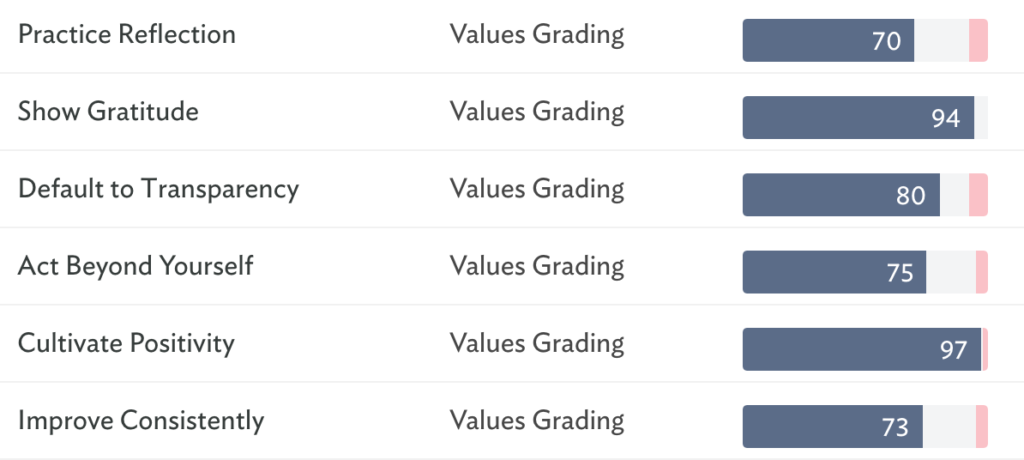Imagine no longer being able to enjoy time with friends and family, because work is constantly on your mind and your phone is constantly in your hand – and the more you stress, the worse you feel.
Or imagine the job you once loved suddenly feeling hollow and pointless, leaving you depressed and constantly fatigued.
For a lot of us who feel deeply connected to our work, this is almost unthinkable. But these are some classic signs of burnout, which can lead to serious physical, mental, and social consequences.
Now that we’re in Year 8 of building Buffer, burnout is something we’re growing increasingly aware of.
We’ve got 80+ exceptional teammates – some of whom have been with the company for 6 or 7 years already – and we want them bringing their creativity, enthusiasm and passion to Buffer for as long as they want. To make that happen, they might need a break – especially those who were working on Buffer in the early startup days, when days were longer and stress was higher.
Burnout can strike no matter how fulfilling the role or how supportive the team, so we needed a long-term solution that went beyond the day-to-day.
Introducing Buffer sabbaticals
To combat burnout and set Buffer up for long-term success, we’re now experimenting with sabbaticals. After every 5 years of working at Buffer, we’re inviting teammates to take a 6-week break, fully paid.
Sabbatical time (which is totally optional) can be spent however teammates like: Working on a side project, traveling, helping a nonprofit, achieving a life goal, spending time with family or something else altogether. There are no specific requirements for this time – we trust our team to know best what they need!
Right now, we’re recommending a sabbatical time frame of about 6 weeks every 5 years. Plus, every year teammates work at Buffer beyond 5 years without taking a sabbatical will add an extra week of sabbatical time, capped at a 12-week maximum.
The timetable looks like this:
- 5 years at Buffer: 6-week sabbatical
- 6 years at Buffer (without taking sabbatical): 7-week sabbatical
- 7 years at Buffer (without taking sabbatical): 8-week sabbatical
- 8 years at Buffer (without taking sabbatical) : 9-week sabbatical
- 9 years at Buffer (without taking sabbatical): 10-week sabbatical
- 10 years at Buffer: 11-week sabbatical if you haven’t taken one yet; another 6-week sabbatical if you have
To make sure this isn’t overly disruptive to the team, we’re asking teammates to plan sabbaticals at least 6 months in advance and work to create a plan for their key responsibilities while they’re away. Most areas will only be able to have one teammate on sabbatical at a time, so long-term advance planning is especially important.
Those on sabbatical are invited to fully disconnect from Buffer and are not required to attend team retreats, onsites, or events (but are always welcome!). Full benefits will continue during their time away. Teammates can feel free to take vacation time as usual during a sabbatical year, but we ask that they not add vacation time onto a sabbatical.
Like so many things at Buffer, these sabbaticals are a bit experimental! As we learn more, they may change form. As experiments, they aren’t something we can guarantee will always exist in exactly this form, but we’ll strive to be as generous as we can be while accomplishing our goals and bringing value to our customers.
The biggest challenge of developing sabbaticals
Although we’ve had some unique sabbatical-style leaves and learning sabbaticals in the past, a true, disconnected sabbatical is new for us.
The biggest challenges to launching a sabbatical policy were figuring out the length of service and the length of the sabbatical – and these numbers will likely change as we grow.
Length of service: Especially with our policy of unlimited vacation, sabbaticals could potentially lead to widespread disruption across the team if introduced them after just a few years of service. But asking folks to work too many years before taking time away wouldn’t address the burnout concern.
Length of sabbatical: Similarly, it was key to find the right amount of time way. It needed to feel generous and expansive enough for a full “system reboot,” without having folks away for so long they would come back to a whole different Buffer. After strongly considering a 2-month period, we ended up dropping it back to 6 weeks for launch to give the program a better chance of sustainability.
Since we’re still a relatively small team (83-ish at the time of launch), the cost to the company of folks taking this much leave is fairly big, but the cost of losing them due to burnout – which has been named as a factor in type 2 diabetes, coronary heart disease, gastrointestinal issues, high cholesterol and even death – is even bigger.
Six weeks is 11.5% of a teammate’s productivity time in the year of their sabbatical but only 2.3% of their overall five-year journey with Buffer. That math was helpful to put into perspective that the overall benefit to the company and our teammates’ health and growth were well worth the cost.
The power of the pause
What will folks do with this time away? Whatever they want! A lot of teammates are dreaming of travel, community service and more.
One action we hope they take during their time away is to take time to reflect. Not only is it one of our six core values (“We believe the act of introspection is where true learning and life-changing adjustments originate.”), reflection is key to the value we hope sabbaticals bring.
In researching, preparing and launching this initiative, I was heavily inspired by the book Pause: Harnessing the Life-Changing Power of Giving Yourself a Break by Racheal O’Meara.
The book defines a pause as any intentional shift in behavior that allows one the space to experience a mental shift in attitude, thoughts, or emotions.
Pauses give us permission to check in, step back, and listen to ourselves.
This is something that’s pretty tough to do when you’re in the thick of it – in fact, reflection is the Buffer value our team consistent feels we have the hardest time actually living day to day. Here are our “values scores” from the end of 2018, as measured by our team surveying tool Culture Amp:

This new wide-open space feels like a promising time to change that reflection challenge – and research backs this up. 87% of those returning from a career break reported feeling more confident about their work, and 75% said they had a clearer vision for their organization. We’re excited to harness the power of the pause!
Fun side note: Although it may be difficult to reflect in the moment, it’s not impossible. Even a “micro-pause”– taking 5-6 consecutive deep breaths – is enough to lower your heart rate and calm your nervous system!
Over to you
Sabbaticals seem to be a small but growing perk. Historically, this time was almost exclusively for academic study. Now 17% of American employers offer one — either paid or unpaid. This list includes many companies we admire, like Patagonia, Moz, and HelpScout, whose sabbatical program was a great source of inspiration as well as a perfect logistical example for Buffer.
We’ll keep you updated on this experiment with the hopes that sabbatical help our team combat stress and avoid burnout. I can’t wait to share our first teammate sabbatical story!
Have you had any experience with sabbatical programs? Do you have any advice for us as we embark on ours? I’d love to hear from you!
Try Buffer for free
190,000+ creators, small businesses, and marketers use Buffer to grow their audiences every month.




